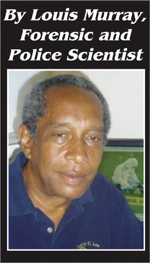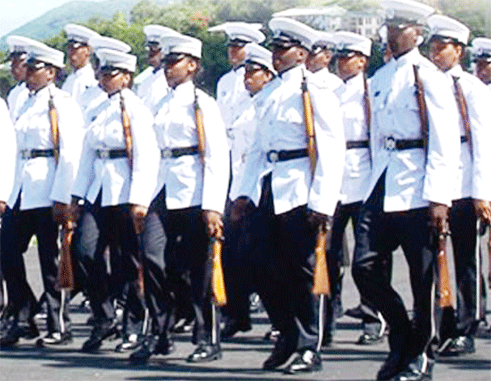 RECENTLY I listened to Assistant Commissioner of Police Desir’s summary of crime statistics for the year so far and his update on the investigative status of homicides. Specifically he associated four as in need of forensic examinations for investigative direction and which, for those unaware or indifferent, highlights its critical role in the triangle of modern day crime solving. But even where arrests are made the potential for and benefits of forensic evidence make it mandatory that it also be given consideration.
RECENTLY I listened to Assistant Commissioner of Police Desir’s summary of crime statistics for the year so far and his update on the investigative status of homicides. Specifically he associated four as in need of forensic examinations for investigative direction and which, for those unaware or indifferent, highlights its critical role in the triangle of modern day crime solving. But even where arrests are made the potential for and benefits of forensic evidence make it mandatory that it also be given consideration.
As I write, the investigation into the latest murder of a female will likely have similar challenges. However our continuing inability to help ourselves in that regard is now well documented.
In a related VOICE article titled, ‘Lab Closure Affecting Police Work – APC Desir’ and which is associated with comments from both the ACP and Acting Assistant Superintendent Collymore, as never heard before those officers were forthright in their professional indication of how the absence of local forensic services was impeding many ongoing and recent major criminal investigations. They are right and must be commended for their honesty and openness, even guarded as it was. But that was inevitable as through frustration, and in their defence police, investigators would have had to put things in perspective. In fact I will further suggest that such shortcomings have undermined a number of past criminal investigations now long gone cold and for which little has been heard. For me it is often that lack of courage to speak out on deficiencies and instead acceptance of whatever goes that sadly permeates much of our public service, resulting in reduced levels of expected professional services.
My experience characterizes Ag. ASP Collymore as a no nonsense career professional who has been around and consequently speaks from an authoritative standpoint. He has worked the trenches seeking answers and resolution to criminal acts, homicides no exception, and like his colleagues will know exactly what is required and when, for as the saying goes ‘he who feels it knows it’. I have on many occasions expressed similar sentiments on their and our country’s forensic predicament and I am now satisfied to pass the baton to the officers, the ones who feel it.
Acting ASP Collymore highlighted one investigation in particular and difficulties experienced with the inescapable aspect of overseas referred forensic work. Again this underscores the many concerns of 1) for how long, 2) at what costs, 3) dangers of inherent pitfalls and 4) the timeliness in which results are obtained. Let’s face it, the police budget barely covers their multitude of operational necessities. So additional and costly expense due to overseas referrals coupled with expenses of compulsory turn over maintenance for the laboratory and staff salaries, even as it is closed, will be an extra and unnecessary burden on the treasury and dilemma for the authorities.
But the cat is already long out of the bag and there can be no further hiding. There has to be accountability with an official statement of the existence of certain fundamental problems in our forensic service that will necessitate a wide range of corrective measures. A decided amount of detail should be given. The fact that such has not happened and instead vagueness could be the damage control faux pas driving the whole situation adrift and into further secrecy. We live in a small town and that approach reinforced by the laboratory’s very closure have fuelled rumour and speculation, sadly now doing tenfold more damage to it than all of what is actually wrong. That is an untenable situation demanding urgent and decisive decision making. Failing both that and transparent surgical rectification the scientific, legal and public confidence important to a redeveloped forensic service will be difficult to obtain and so much is at stake.
Last week the police talk was that the autopsy is a crime scene and there was reference to the aspect of contamination. Excellent comments which should now prompt them to push to get the mortuary better geared for conducting forensic procedures, especially trace evidence manoeuvers. Ironically in a previous article I had cause to refer to concerns in the practice of storing, even if occasionally, bodes for forensic examinations at private funeral homes.
I do not believe there is any greater threat of contamination from one family member or their professional representative, safely positioned, at an autopsy, than that which occurs at the scene of a crime through various actions including those of uninformed or curious police officers themselves and an uncontrolled public. A police comment was made for creating an enclosed safe zone in the mortuary and that I agree with as it would safely serve whether for instructional or observational purposes during standard or forensic autopsies. In that way any issue of contamination would be set aside and the accommodated attendance of at least a professional representative of family members of a victim, would go a very long way in removing any perception of unfairness a family may have in the autopsy procedures.













